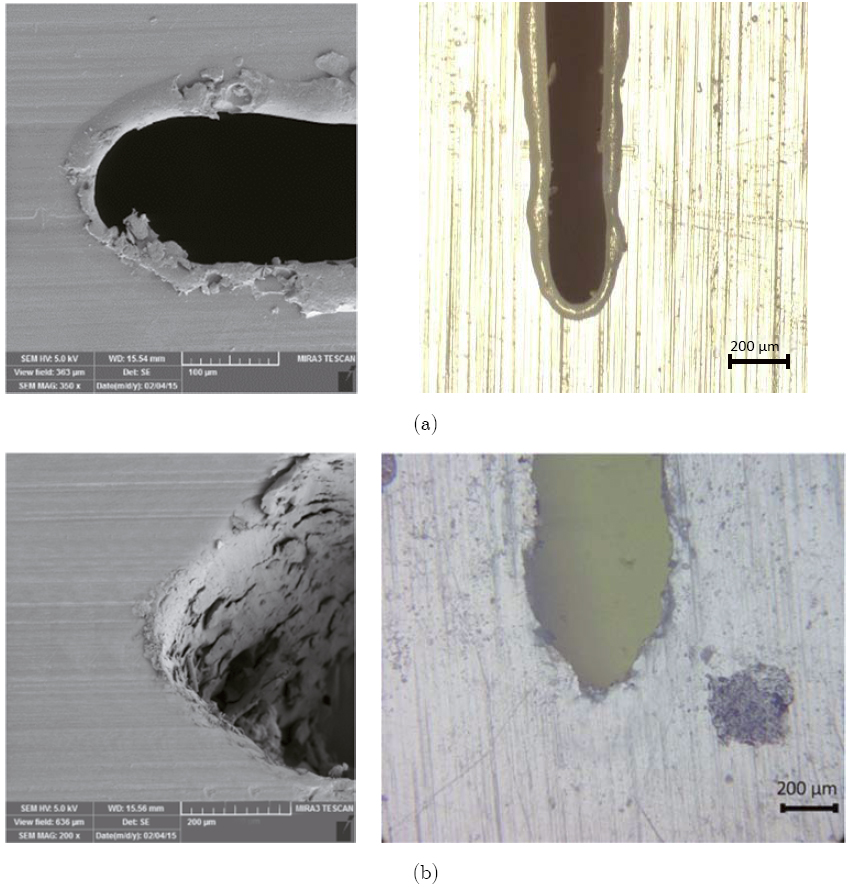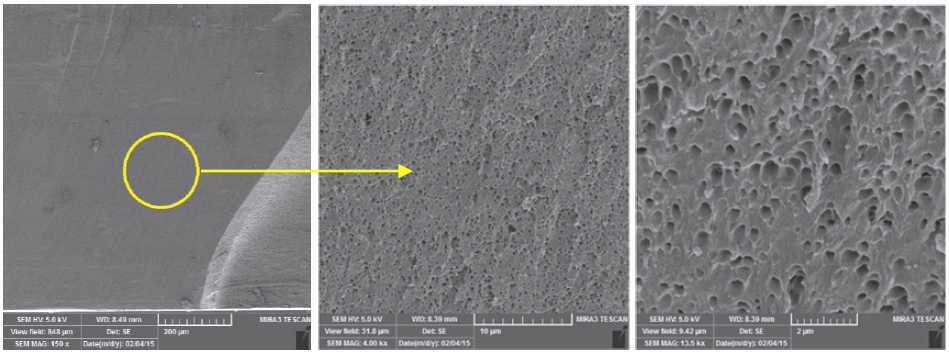Abstract
In this study, eight techniques including coping saw, metal slitting saw, razor blade, cubic boron nitride (CBN) disc, scoring, die-cutting and guillotining, diamond disc, and laser cutting methods were used to produce pre-cracked fracture toughness (Kc) test specimens made of poly(methyl methacrylate)/graft-acrylonitrile butadiene styrene blends. The influences of notch shape (radial, rectangular, or angular-shaped and variety of thicknesses), pre-cracking method, chip removing or non-chip removing, and the contact or non-contact methods on the results obtained in fracture toughness tests were investigated. The results were analyzed by two methods, quantitatively and qualitatively, by comparing the obtained Kc results and studying the SEM and optical microscopy images, respectively. The results indicated that the different conditions of a produced pre-crack including; geometry of pre-crack due to geometry of tools, residual stress due to pre-crack creation, heat affected zone, damage of crack tip, and producing crazing around the crack tip could affect the fracture toughness. The maximum difference resulted from different pre-cracking methods was equal to 0.24 MPa.m0.5 and the lowest value of fracture toughness Kc, 2.53 MPa.m0.5, belonged to the scoring method but the highest value, 2.77 MPa.m0.5, belonged to the metal slitting saw method. Also, the results indicated that the effects of notching on toughness of RT-PMMA had a low notch sensitivity and the differences between minimum and maximum Kc values was found about 9%.
Keywords:
Pre-cracking methods; Rubber-toughened PMMA; Fracture toughness; Crack tip shape; Critical stress intensity factor











